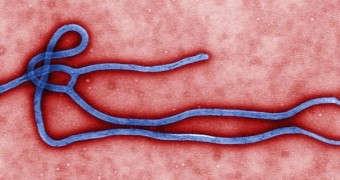Earlier this month, the World Health Organization announced that since December 2013, when it claimed its first victims, until the end of 2014, the Ebola virus came to infect some 20,000 people and kill about 8,000 of them.
The good news is that, as of recently, the ongoing epidemic in West Africa has somewhat subsided. Thus, it is understood that this year's January witnessed a week during which less than 100 new cases of people infected with this virus were reported.
Then again, scientists with the Pasteur Institute in France warn that, having taken the time to look at the genetic makeup of the Ebola virus behind the historic epidemic in West Africa, they found that this highly infectious microorganism was rapidly mutating.
The Ebola virus is forever changing
In a report detailing their work, the Pasteur Institute researchers explain that, ever since this latest Ebola epidemic debuted in Guinea, they got to work collecting samples of the Ebola virus responsible for it and sequencing its genetic makeup.
Having processed several such samples, the scientists found that, as the epidemic progressed, the deadly virus underwent multiple mutations. True, viruses evolve by means of mutation all the time, so this find didn't exactly come as a big surprise.
The thing is that, for the time being at least, the specialists behind this investigation are clueless about what purpose the mutations the Ebola virus has so far experienced could possible serve. This means that the virus might be working on getting even deadlier without anyone knowing.
“We know the virus is changing quite a lot,” explained specialist Anavaj Sakuntabhai. Furthermore, “that's important for diagnosing (new cases) and for treatment. We need to know how the virus is changing to keep up with our enemy.”
No reason to sound the alarm just yet
The Pasteur Institute researchers say that, in the aftermath of this series of mutations experienced by the Ebola virus, several cases of people who were infected but who did not display any symptoms have been recorded. This indicates that the changes it's been through have made the virus less aggressive.
Still, the specialists fear that this shift in virulence could correlate with the virus being more contagious than it used to be. They say that, should Ebola one day make the shift to being airborne, the epidemic could all of a sudden take a turn for the worse.
“A virus can change itself to less deadly, but more contagious and that's something we are afraid of,” scientist Anavaj Sakuntabhai told the press in an interview. Hopefully, specialists will soon figure out what the Ebola virus' mutations are all about.

 14 DAY TRIAL //
14 DAY TRIAL //